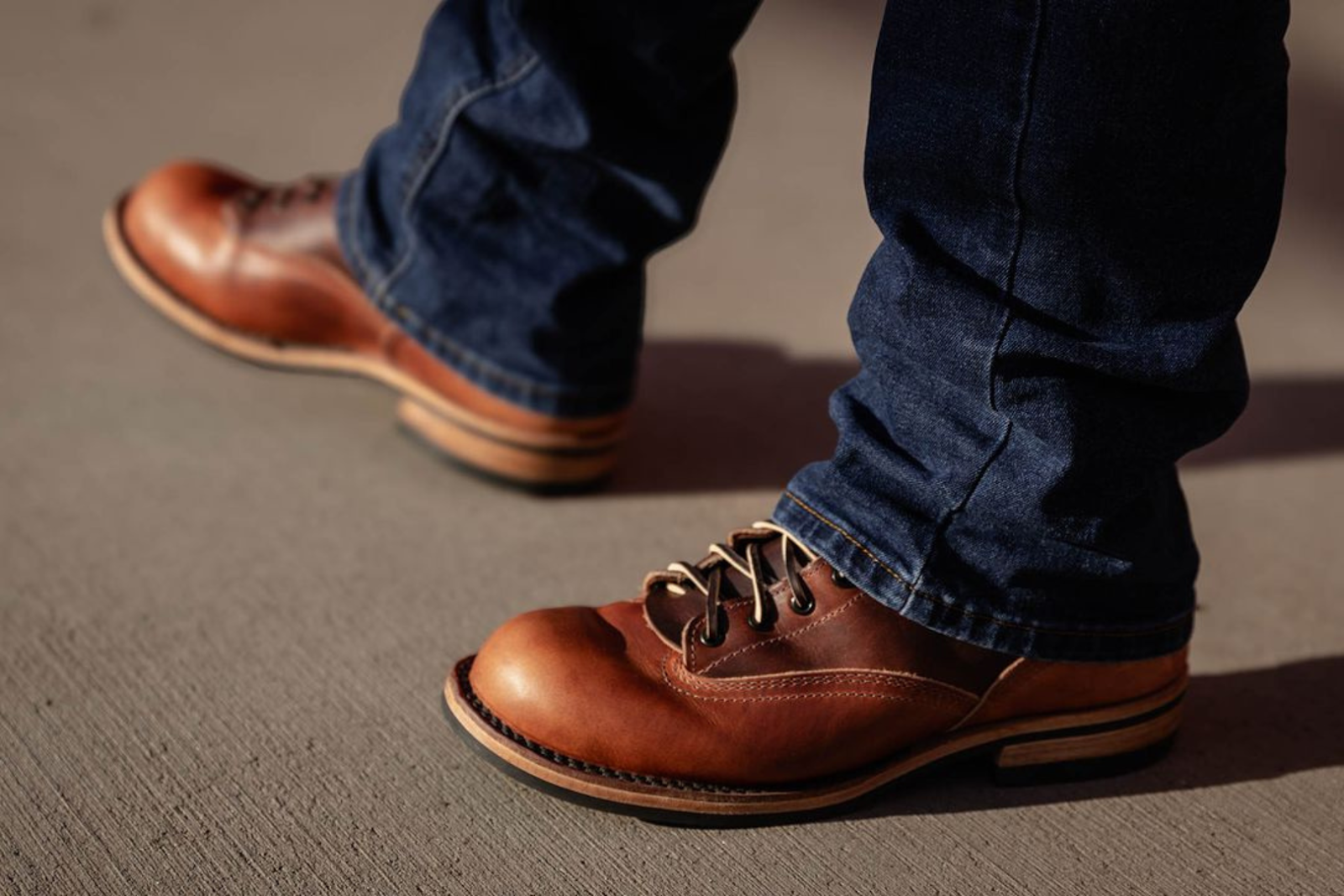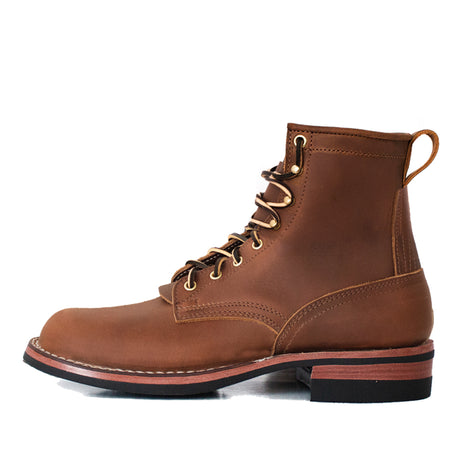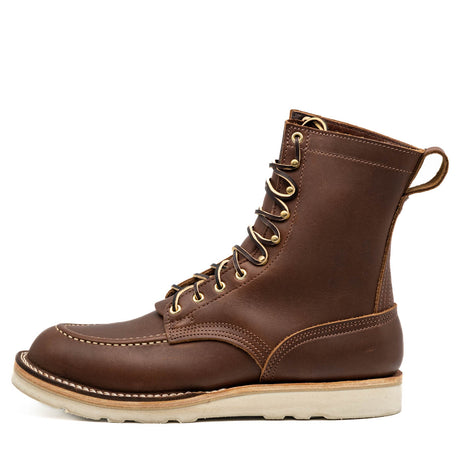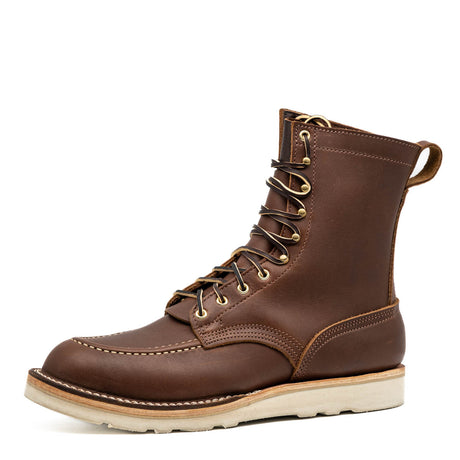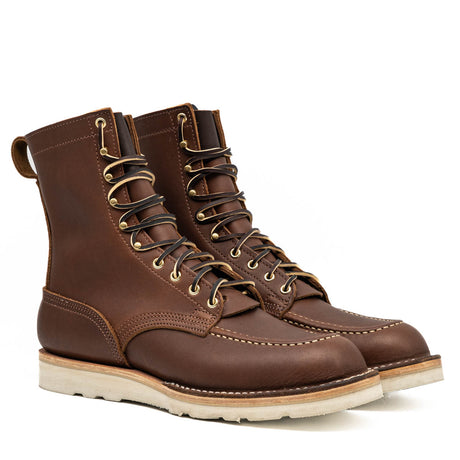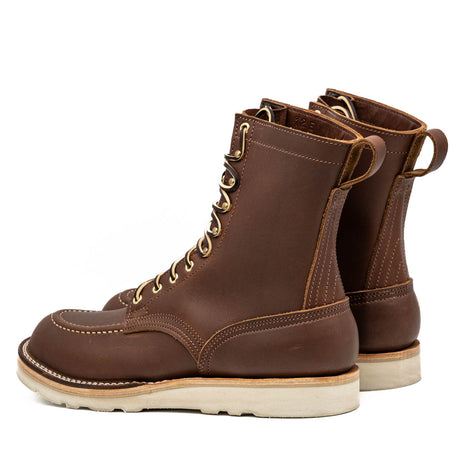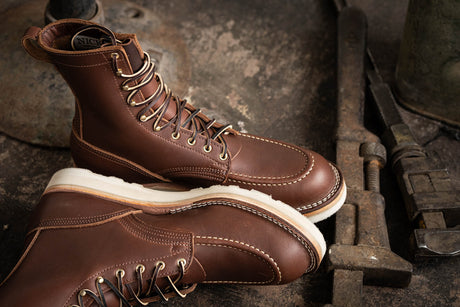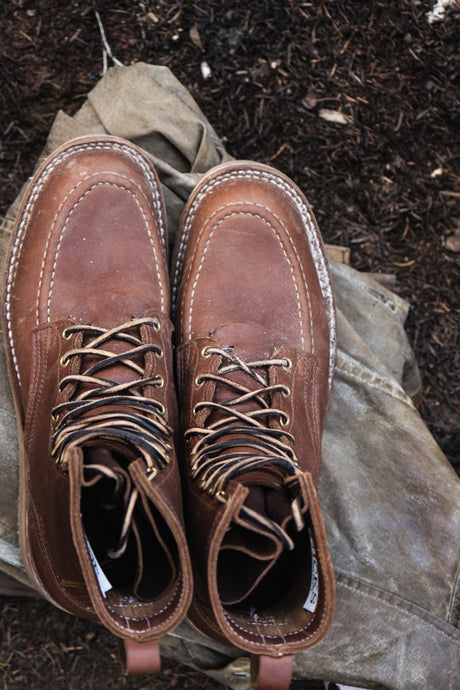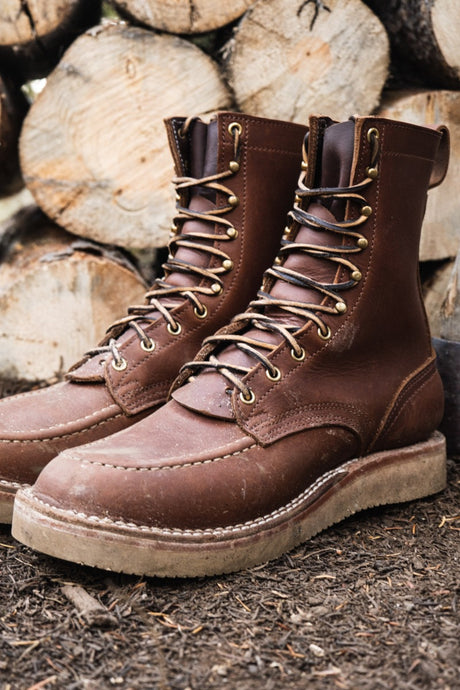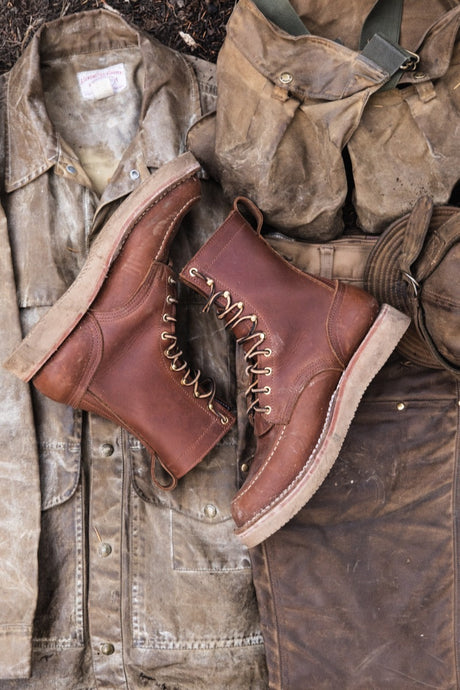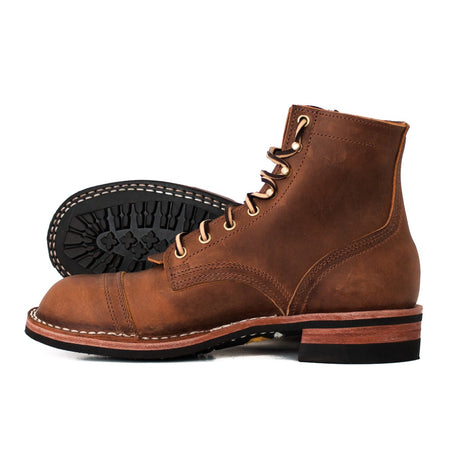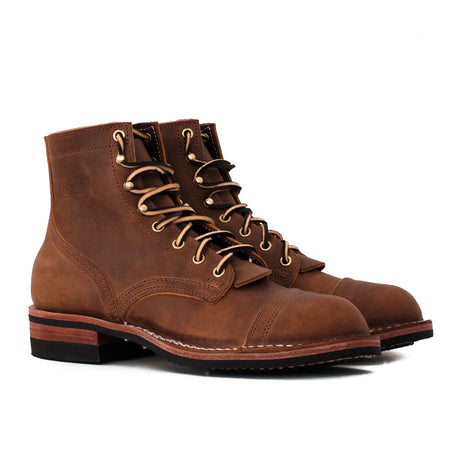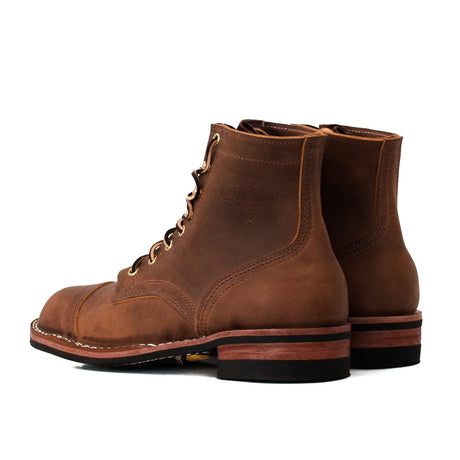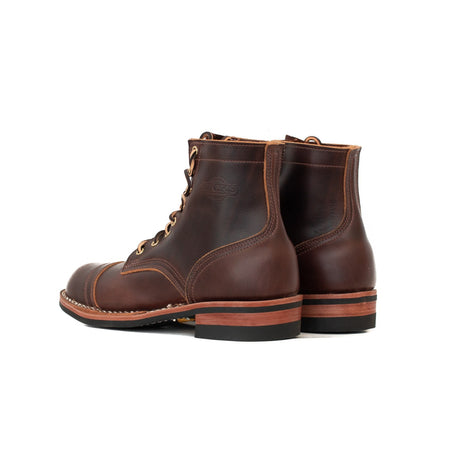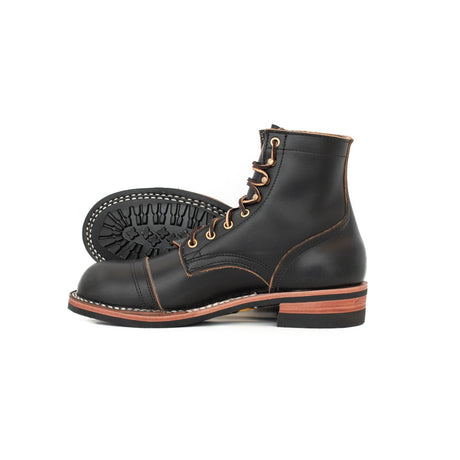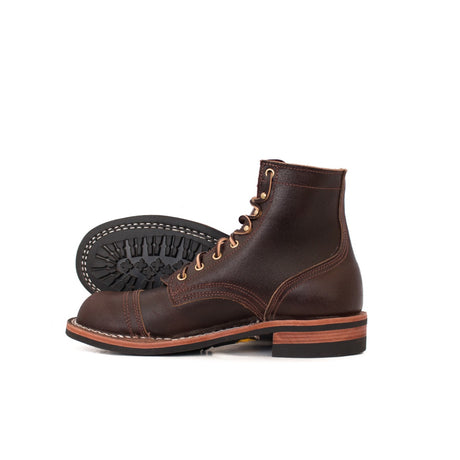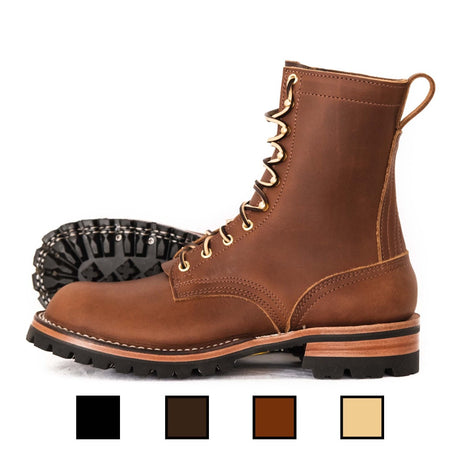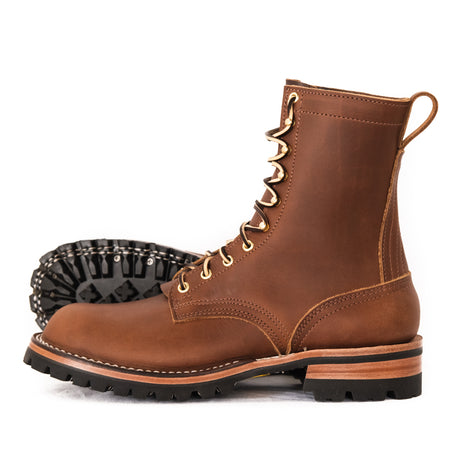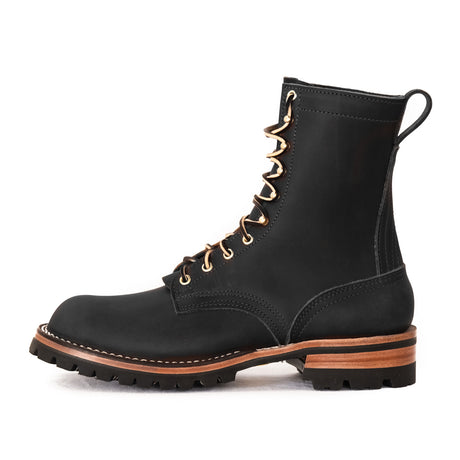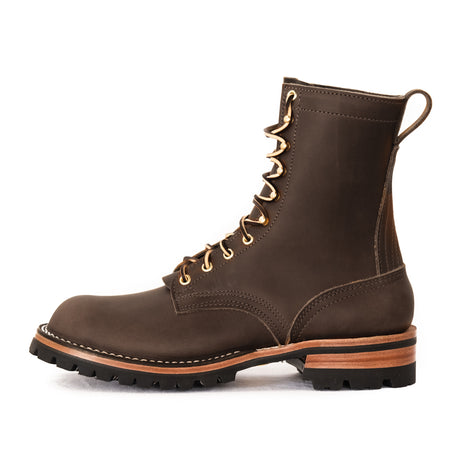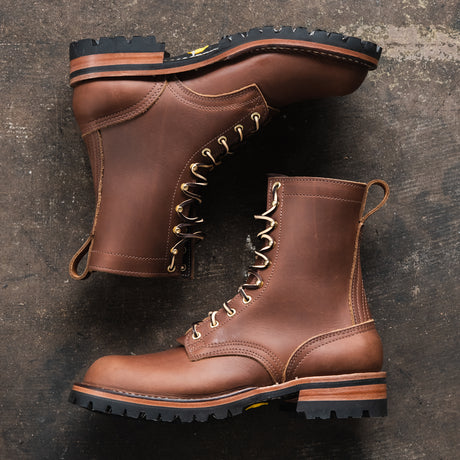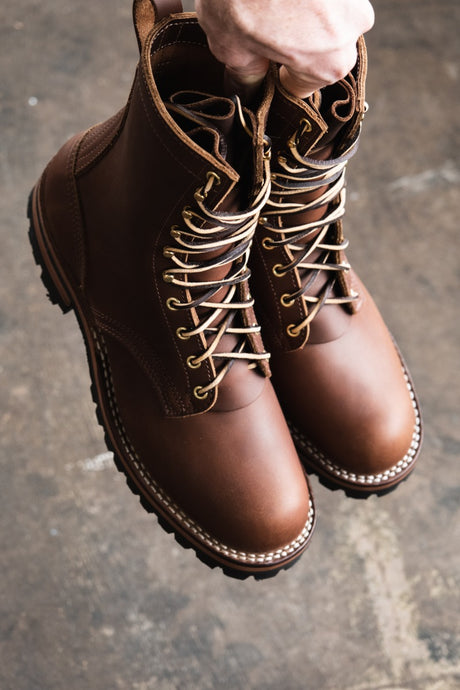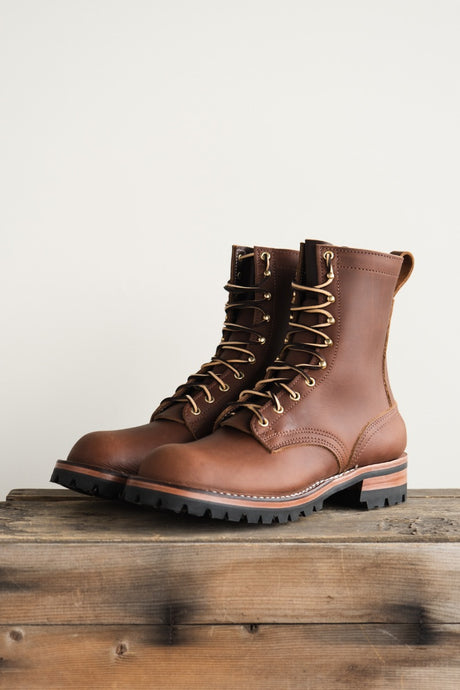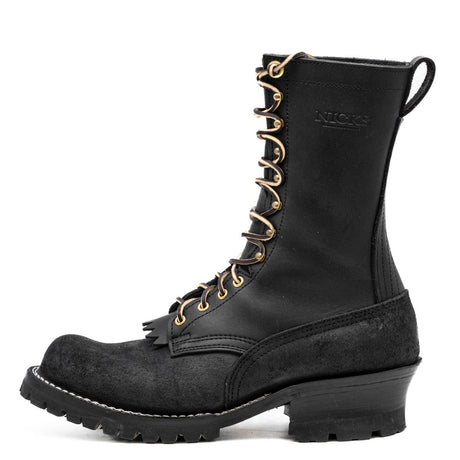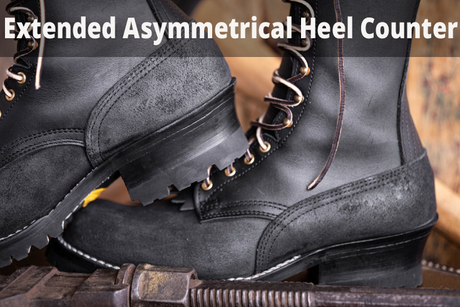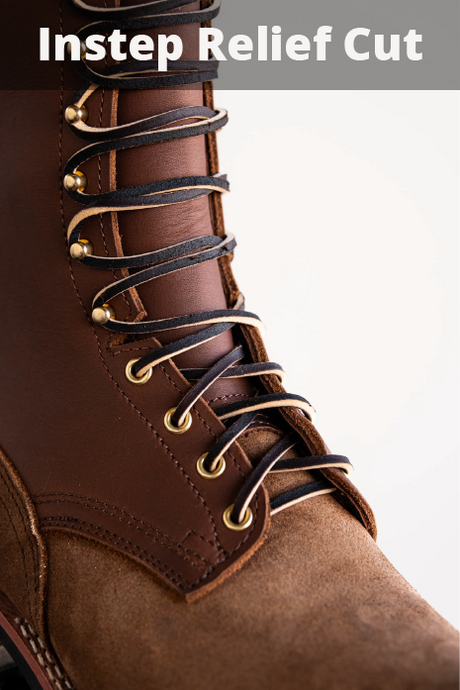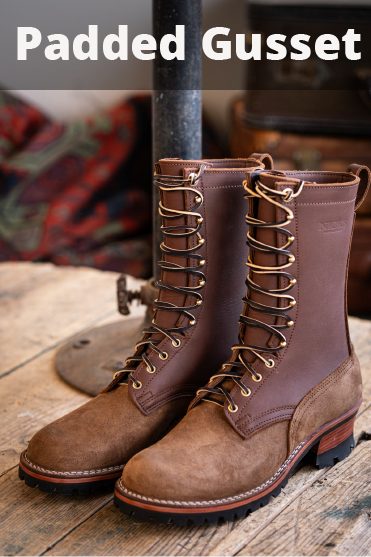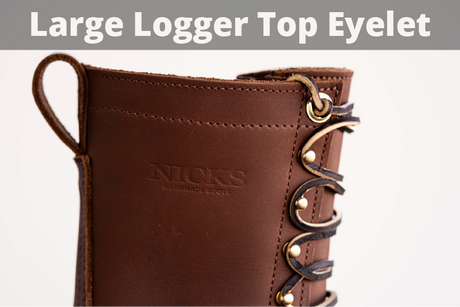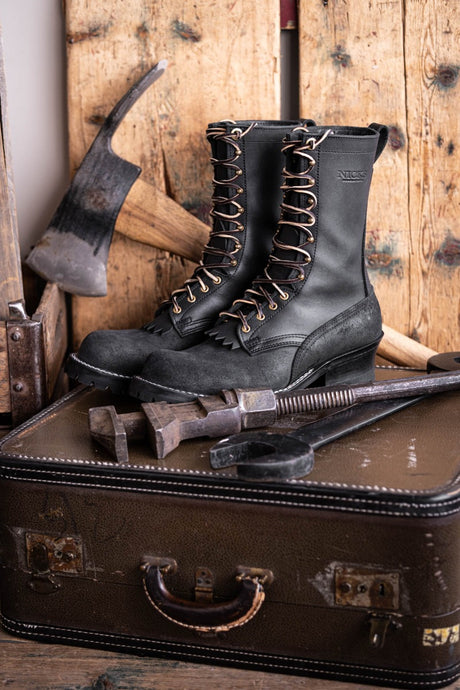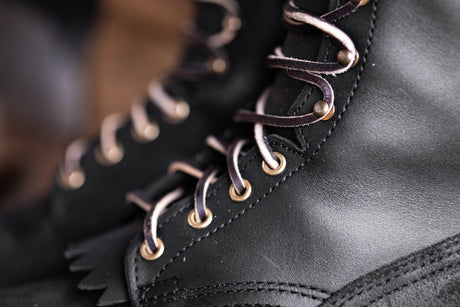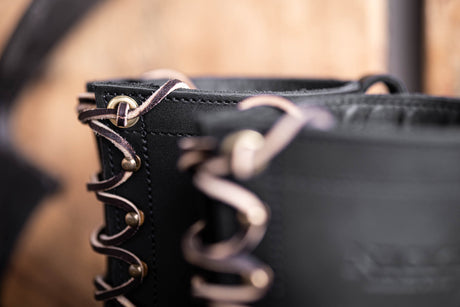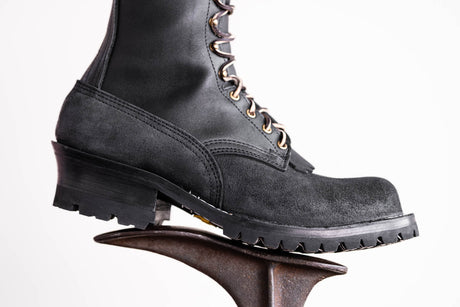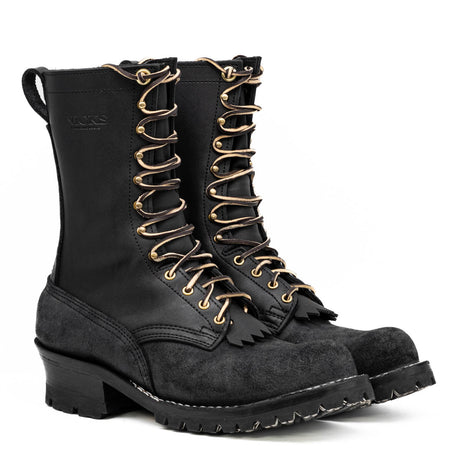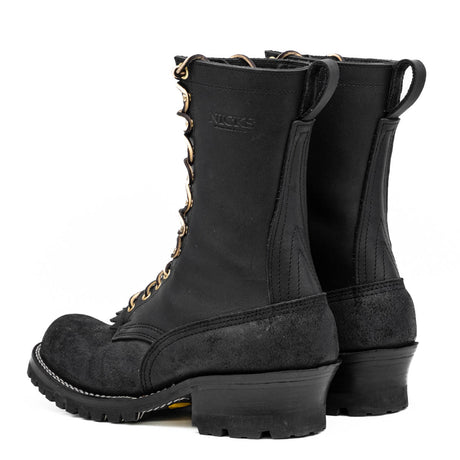Key Takeaways:
- Regular Maintenance: Regular cleaning and conditioning can prevent scuffs and maintain leather's appearance and durability.
- Correct Tools: Using the right tools, like soft cloths and leather conditioner, is crucial for effective scuff removal without damaging the shoes.
- Professional Help: For deep scuffs or scratches, consider professional repair services to ensure the best results and longevity for your footwear.
At Nicks Boots, we are dedicated to providing boots that excel in both durability and style. Our commitment to excellence guarantees that every pair endures the demands of daily activities while retaining their visual charm.
Scuff marks are a common but frustrating issue when it comes to boots. Those unsightly blemishes can detract from the appearance of your shoes, making even the most pristine pairs look worn and neglected. Whether you're preparing for a special occasion or just aiming to maintain a polished look, we've got expert tips and tried-and-true methods to help you remove scuff marks from your shoes effectively.
In this piece, we offer expert tips on preserving the elegance and durability of your leather boots. This article encompasses everything from simple methods for removing light scuffs to addressing deeper scratches and implementing preventative strategies. Follow our step-by-step guide to keep your boots looking their best at all times.

Understanding Scuffs On Leather Shoes
Types Of Scuffs
Light scuffs are typically superficial marks that do not penetrate the leather's finish. Medium scuffs, on the other hand, are deeper and may slightly damage the leather's surface but do not reach the underlying material. Deep scuffs are significant scratches that impact the leather's structure. These deeper marks require more intensive repair techniques.
Causes Of Scuffs
Daily wear and tear from routine activities contribute to each type of scuff, affecting the leather in various ways. Accidental damage, such as specific incidents, can lead to more severe scuffing. These encounters with different elements and pressures mark the leather, demonstrating the impact of both everyday use and unexpected events. Understanding these sources helps in effectively managing and minimizing damage to footwear.
Impact On Leather
Surface-level impact, such as light and medium scuffs, affects the appearance of leather but does not undermine its durability. In contrast, deep scuffs can compromise the integrity and lifespan of leather shoes by impacting their structural strength. These deeper marks necessitate more careful and extensive repair strategies to restore the footwear effectively. Understanding the different levels of impact is crucial for maintaining the quality and functionality of leather shoes over time.
Simple Steps To Remove Light Scuffs
Cleaning The Surface
Begin by gently wiping the leather surface with a soft, dry cloth to ensure all loose dirt and dust are removed. This initial cleaning prevents any abrasive particles from scratching the leather further during the conditioning process. It is crucial to perform this step carefully to avoid embedding dirt deeper into the leather. Clean the entire surface uniformly to prepare it thoroughly for conditioning.
Applying Leather Conditioner
Dab a small amount of leather conditioner onto a microfiber cloth and apply it to the scuffed area using gentle, circular motions. The conditioner not only helps to lift the scuff marks but also moisturizes the leather, enhancing its flexibility and preventing future cracks. This treatment aids in restoring the leather's natural oils, lost during wear or exposure to environmental factors. Allow the conditioner to penetrate deeply, ensuring that the leather remains supple and resilient.
Buffing The Leather
After the conditioner has been absorbed, take a clean section of your cloth and buff the area vigorously. This step is crucial as it polishes the surface, helping to blend the treated spots seamlessly with the surrounding leather, restoring the shoe's natural shine and finish. The buffing action generates heat and friction, which helps to further incorporate the conditioner into the leather. Conclude with additional buffing using a slightly damp cloth to enhance the shine and ensure an even finish across the entire surface.
Choosing The Right Tools For Scuff Removal
- Soft Cloths: A soft microfiber cloth is essential for the gentle removal of surface dust and for applying products without scratching the leather. The cloth's soft texture ensures that it cleans effectively without leaving marks or additional scuffs, making it ideal for both initial cleaning and final polishing of the leather shoes.
- Boot Brushes: Boot brushes are specifically designed for more robust cleaning tasks, capable of reaching deeper into the leather's texture to remove embedded dirt. These brushes come in various bristle stiffnesses; softer bristles are perfect for general cleaning, while stiffer bristles can be used for tougher scuffs. Regular use of a boot brush can significantly maintain the appearance and longevity of the boots.
- Leather Conditioner and Polishes: Leather conditioner and polishes are crucial for the next step in scuff removal. They nourish the leather, restore its natural oils, and help conceal scuffs. It's important to select products that are appropriate for the type of leather you are treating to ensure that they enhance rather than compromise the shoe's finish.
- Specialty Tools: Specialty tools such as leather erasers and scuff removers are tailored to address specific types of damage without causing further harm. These tools allow for precise treatment of scuffed areas, effectively reducing their visibility while maintaining the integrity of the leather.
- Protective Sprays: Applying a protective spray forms a shield that guards the leather against water, stains, and future scuffs. These sprays are a crucial final step in the maintenance routine, enhancing the leather’s resistance to wear and environmental factors, ensuring your shoes stay cleaner and in good condition for longer.
Dealing With Deep Scuffs And Scratches
Assessing The Damage
Deep scuffs and scratches can significantly compromise the integrity of leather shoes. It's essential first to assess the extent of the damage to determine the appropriate repair method. Look for signs that the scuff or scratch has penetrated beyond the surface into the leather's deeper layers. This initial evaluation will guide you in selecting the right materials and techniques for effective repair.
Choosing A Repair Kit
Selecting the right leather repair kit is crucial for addressing deep damage. These kits often come with a variety of fillers and colorants to match your specific leather type and color. Ensure the kit includes a filler that can be used to level the damaged area with the surrounding leather, as well as dyes or paints that blend into the original shoe color.
Applying The Repair Compound
Application of the repair compound must be done meticulously. Start by cleaning the damaged area thoroughly before applying the filler. Use the tools provided in the kit, usually a spatula or a small brush, to apply the compound evenly. Ensure the filler completely fills the scratch or scuff and is level with the leather surface, allowing for a smooth finish once it dries.
Coloring And Blending
After the repair compound has dried and cured, the next step is to apply colorant to blend the repair into the rest of the shoe. This might require several layers of colorant to achieve a perfect match. Each layer should be allowed to dry completely before applying the next, ensuring that the color builds up gradually and matches the surrounding area without noticeable patches.
Conditioning And Polishing
The final steps involve conditioning and polishing the leather to integrate the repair fully and restore the shoe's overall aesthetic. Conditioning the leather helps to maintain its flexibility and prevents future cracks at the repair site. Finish with a quality leather polish, which will not only give your shoes a gleaming finish but also add a protective layer against future wear and tear.
Preventive Measures To Protect Your Shoes
Regular Cleaning And Conditioning
To ensure your leather shoes last longer and maintain their appearance, regular cleaning and conditioning are essential. Start by using a boot brush to remove any surface dirt and debris, which helps prevent scratches and stains. Apply a high-quality leather conditioner to keep the leather moisturized and flexible, which is crucial for avoiding cracks and premature aging. This routine should be performed every few weeks or more frequently depending on usage.
Proper Storage
Storing your leather shoes properly is vital to preserving their shape and quality. Keep them in a cool, dry place away from direct sunlight to prevent fading and drying of the leather. Using shoe trees can help maintain the shape of your shoes, prevent creases, and absorb moisture from daily wear. Avoid storing shoes in plastic bags or tightly packed spaces where air circulation is limited.
Avoiding Harsh Conditions
Leather shoes are particularly susceptible to damage in harsh weather conditions. Whenever possible, avoid wearing them in heavy rain, snow, or extreme heat, as these elements can cause significant wear and tear. If exposure to these conditions is unavoidable, make sure to clean and treat your shoes afterward to restore any lost moisture and protection.
Regular Inspections
Regular inspections can catch potential problems before they become severe. Check for signs of wear such as loosening stitches, worn soles, and surface damage. Addressing these issues early, through professional repairs or at-home care, can prevent more extensive damage and help maintain the shoe’s structural integrity.
Final Thoughts
Eliminating scuff marks from shoes is essential for maintaining their aesthetic and structural integrity. The article provides useful tips on treating and preventing these blemishes effectively. This guidance assists shoe owners in preserving the elegance of their leather shoes and safeguarding their investment. By adhering to the outlined steps, individuals can keep their footwear in excellent condition for an extended period. This not only improves the shoes' appearance but also prolongs their durability. Ultimately, the article is a valuable tool for anyone aiming to maintain their shoes in peak condition.
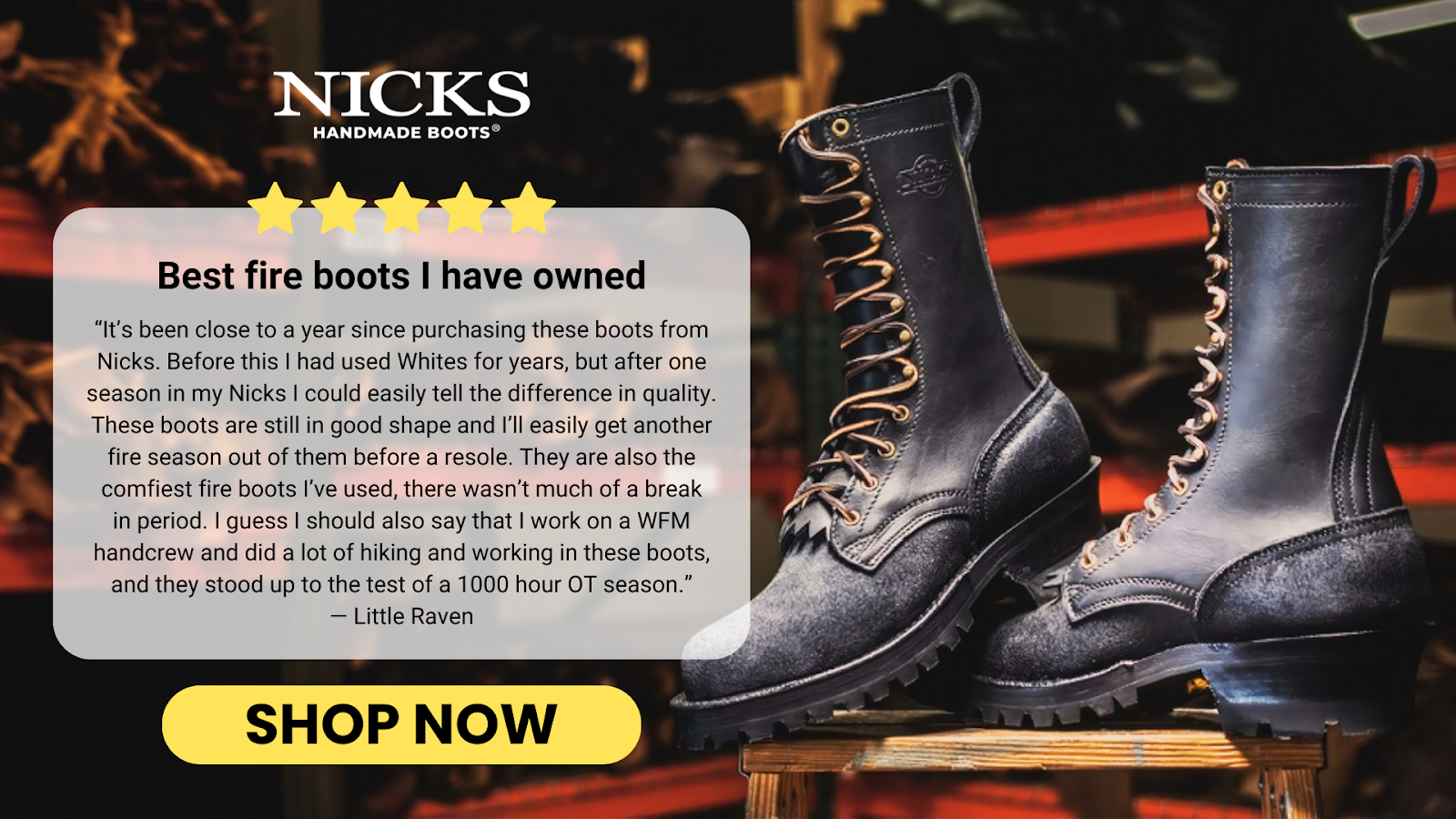
Read also:
Frequently Asked Questions About How To Get Scuff Marks Off Shoes
What are the best tools for removing scuff marks from shoes?
Soft microfiber cloths and boot brushes are ideal for removing scuffs without causing damage. Microfiber cloths are gentle on the leather, while boot brushes are great for tougher marks. Ensure you use the correct brush stiffness to avoid additional scuffs.
Can household items be used to remove scuffs from shoes?
Common household items like baking soda and toothpaste can be effective for light scuff marks. Apply a small amount on a damp cloth and gently rub the scuffed area. Always perform a patch test on a hidden area first to ensure it doesn't damage the leather.
How often should I condition my leather shoes?
Leather shoes should be conditioned every few weeks, or more often if they are heavily used. Conditioning keeps the leather moisturized, preventing cracks and scuffs. This routine extends the life and beauty of your shoes.
Are there any specific techniques for buffing out scuffs on shoes?
Buffing scuffs involves using a microfiber cloth in gentle, circular motions. This technique helps to blend the treatment into the surrounding leather, restoring the shoe’s finish. Finish with additional buffing for a seamless shine.
How can I prevent scuffs on my shoes?
To prevent scuffs, regularly apply a protective spray that shields against wear, water, and stains. Avoid rough surfaces and sharp objects that can scratch the leather. Proper care and preventative measures can significantly reduce the appearance of scuffs.
What should I do if the scuff penetrates deeply into the leather?
For deep scuffs, use a leather repair kit with fillers and colorants that match your shoes. Apply the filler to level the damaged area, then color to blend it seamlessly. This method helps restore both the look and integrity of the leather.
Is there a way to remove scuffs without buying specialized products?
For light scuffs, sometimes a soft cloth and a bit of effort are all you need. Vigorously rub the scuffed area to lift the mark. Regularly conditioned leather often responds well to this simple technique.
How do different types of leather affect scuff removal?
Different leather types require specific care methods; soft leathers need gentler treatments than tougher ones. Always check the manufacturer's care instructions before attempting scuff removal. Using appropriate products and techniques ensures the best care for each type of leather.
What are the consequences of not treating scuffs on shoes?
Leaving scuffs untreated can lead to further leather damage and deterioration. Over time, this can shorten the lifespan and affect the appearance of your shoes. Regular maintenance is key to preserving the quality of the footwear.
Can professional shoe repair services remove scuffs that I can't handle at home?
If home remedies fail, professional cobblers can address severe scuffs and scratches. They possess the specialized tools and expertise needed for intricate repairs. Turning to professionals ensures that your shoes are restored effectively and durably.



